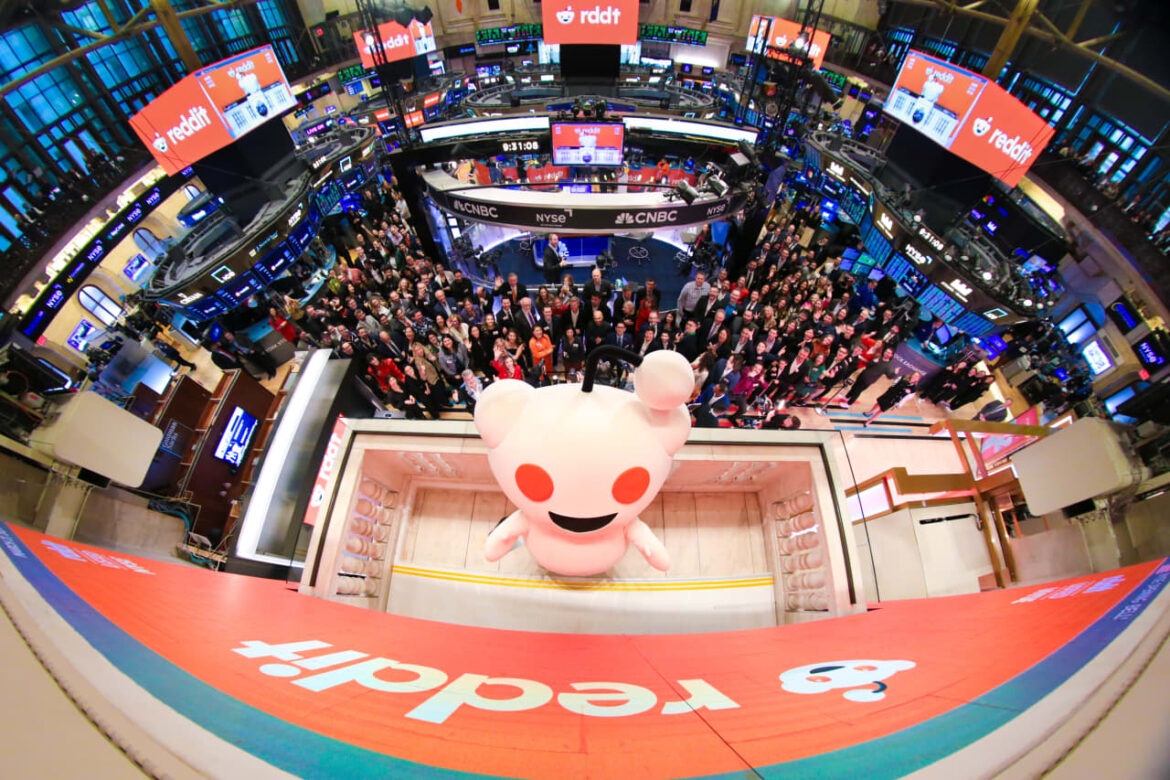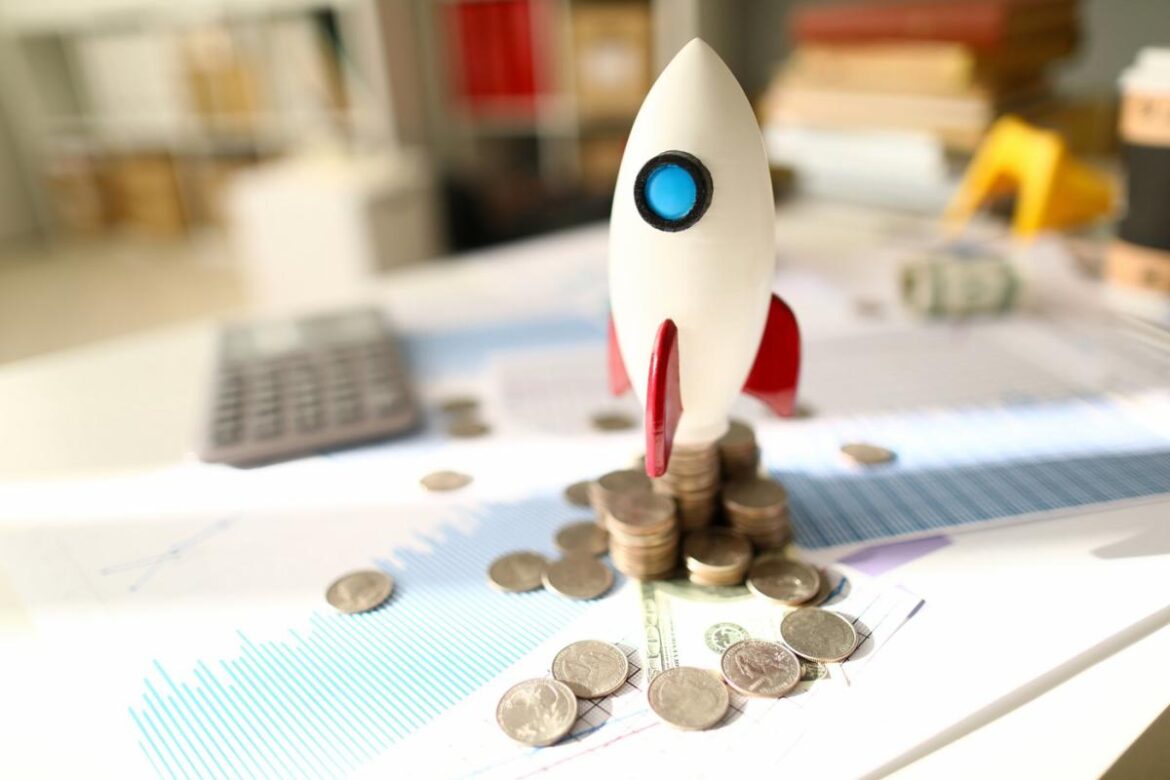
There are still a number of companies in the private market that are potential IPOs — but underwriters will likely take a cautious approach this year.
Source link
IPO
If You Invested $1,000 in Artificial Intelligence (AI) Stock Nvidia for Its IPO in 1999, Here’s the Jaw-Dropping Amount of Money You’d Have Now
Over the long run, Wall Street is a bona fide wealth-creating machine. Although gold, oil, housing, and Treasury bonds have increased in value over multiple decades, no asset class has come close to replicating the average annual returns delivered by stocks over the past century.
For example, including dividends paid, the benchmark S&P 500 has delivered just a hair north of a 10% annualized return since its official inception as a 500-company index in 1957. That’s a hearty return that can double investors’ money about every seven years.
But on an aggregate growth basis, the S&P 500 doesn’t hold a candle to what semiconductor stock Nvidia (NASDAQ: NVDA) has done for investors since becoming a publicly traded company in 1999.
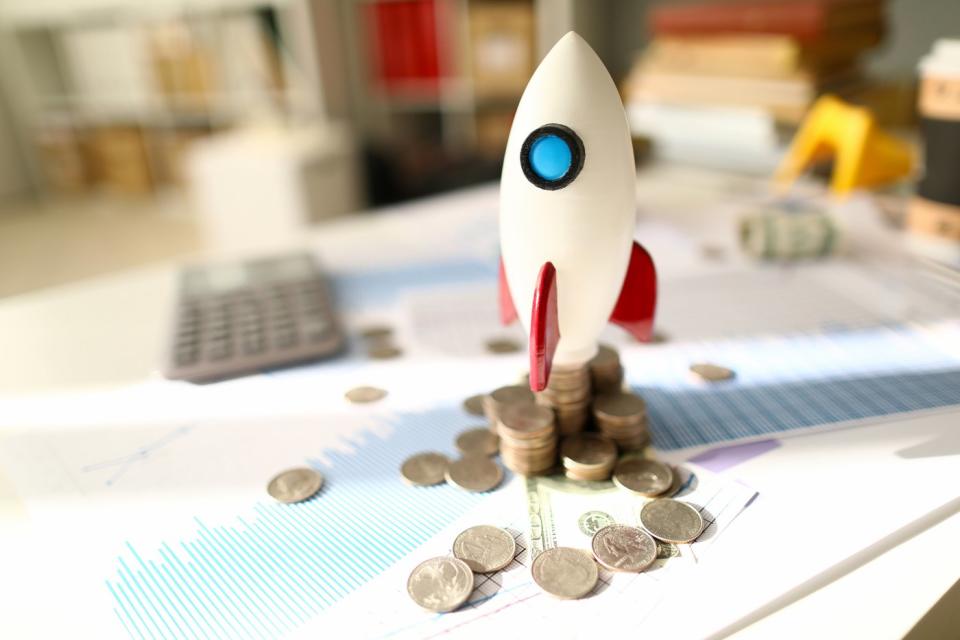
If you purchased $1,000 of Nvidia stock at its IPO price, you’re now rich
Not too long before the dot-com bubble burst in 2000, Nvidia made its grand entrance as a publicly traded company. Its initial public offering (IPO) occurred on Jan. 22, 1999, with shares being sold at $12. Of course, a lot has changed since then.
If investors had the wherewithal to purchase $1,000 worth of Nvidia stock for its IPO, they would have received 83 shares, not including commission costs and fractional shares. In the quarter of a century since going public, this Wall Street darling has split its stock on five separate occasions. The figure in parenthesis behind each split denotes what the original 83-share position would have grown into:
-
June 27, 2000: 2-for-1 stock split (166 shares)
-
Sept. 12, 2001: 2-for-1 stock split (332 shares)
-
April 7, 2006: 2-for-1 stock split (664 shares)
-
Sept. 11, 2007: 3-for-2 stock split (996 shares)
-
July 20, 2021: 4-for-1 stock split (3,984 shares)
IPO-day investors have seen their share count in Nvidia grow by a factor of 48. At the same time, the IPO offering price has been reduced to a split-adjusted $0.25 per share.
Based on Nvidia’s closing price of $878.36 on March 15, 2024, a 3,984-share position would equate to $3,499,386. For those of you keeping score at home, Nvidia has produced a 351,244% gain since its IPO, which compares to just a 318% return for the benchmark S&P 500 over the same period. Keep in mind that I’m not including the additional returns from Nvidia’s nominal dividend in this 351,244% figure, either.
Here’s what’s made Nvidia the stock of the century (thus far)
Throughout its 25 years as a public company, Nvidia has had moments where it’s thrived. For quite some time, the company’s graphics processing units (GPUs) used for gaming on personal computers were its calling-card to success. The company also gained momentum from 2016 through 2018 as cryptocurrency prices soared. Cryptocurrency miners gobbled up the company’s high-powered GPUs.
But there’s little question that Nvidia’s role as the infrastructure backbone of the artificial intelligence (AI) movement has done most of the heavy lifting.
Though estimates vary wildly, the analysts at PwC believe AI can add $15.7 trillion to global gross domestic product by 2030. Utilizing software and systems to handle tasks that would normally be assigned to humans, and seeing these systems evolve over time and become smarter, is what gives AI application across virtually every sector and industry.
Nvidia’s A100 and H100 GPUs are nothing short of the standard in AI-accelerated data centers. With demand easily outweighing the supply of these high-powered chips, Nvidia has enjoyed otherworldly pricing power, which more than double its sales in fiscal 2024 (ended in late January).
Additionally, Nvidia’s ramp of A100 and H100 chips looks to be in its early innings. Its four largest customers — and fellow “Magnificent Seven” members — Microsoft, Meta Platforms, Amazon, and Alphabet, have been aggressively gobbling up supply for their own AI-fueled ambitions.
However, sustaining this success in the years to come could prove challenging.
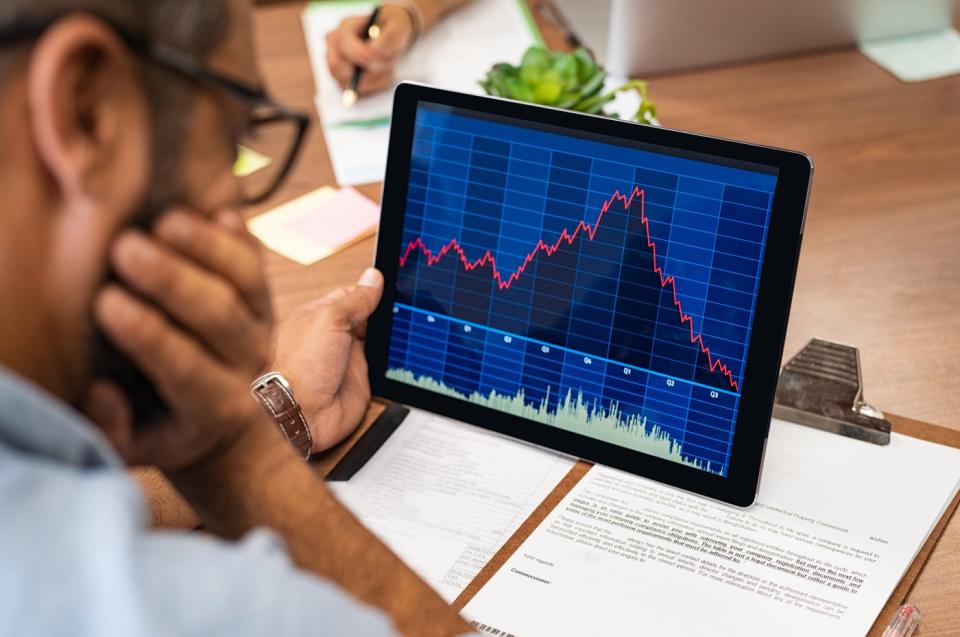
Nvidia’s epic outperformance may come to a screeching halt
For the past year, Nvidia has blown the doors off of Wall Street’s revenue and profit forecasts. But don’t expect this to continue for much longer.
One problem Nvidia may be contending with in the second-half of 2024, if not well beyond, is margin contraction. The scarcity of the company’s AI-GPUs is what’s lifted prices for these chips into the stratosphere. With supply chain issues beginning to ease and external competitors entering the arena, AI-focused GPUs will be far less scarce in the second-half of 2024 than they are now. That’s a recipe for weaker pricing power and lower margins for Nvidia.
What’s arguably an even bigger concern for Nvidia than the external competitors that’ll be challenging its AI-accelerated data center dominance is that its aforementioned top four customers, which account for 40% of its sales, are developing AI-GPUs of their own. Regardless of whether these internally developed GPUs are to complement Nvidia’s chips or replace them, we’re very likely witnessing a peak of orders that will taper into subsequent years.
Nvidia is also getting no help from U.S. regulators. Following an initial round of export restrictions to China for its top-notch A100 and H100 GPUs, the company developed the toned-down A800 and H800 chips. Late last year, U.S. regulators axed the shipment of these GPUs to China as well. Nvidia is missing out on billions of dollars in potential quarterly sales because of these restrictions.
The final damning factor for Nvidia, aside from its lofty valuation, is that every next-big-thing investment trend over the past 30 years has navigated its way through an early stage bubble, without exception. Investors have a terrible habit of overestimating the adoption/demand of new innovations or trends, leading to bubbles. It’s highly unlikely that Nvidia/AI is going to be the exception to this unwritten rule.
Although Nvidia has made patient investors richer, locking in some of those gains would likely be a wise decision.
Should you invest $1,000 in Nvidia right now?
Before you buy stock in Nvidia, consider this:
The Motley Fool Stock Advisor analyst team just identified what they believe are the 10 best stocks for investors to buy now… and Nvidia wasn’t one of them. The 10 stocks that made the cut could produce monster returns in the coming years.
Stock Advisor provides investors with an easy-to-follow blueprint for success, including guidance on building a portfolio, regular updates from analysts, and two new stock picks each month. The Stock Advisor service has more than tripled the return of S&P 500 since 2002*.
*Stock Advisor returns as of March 18, 2024
John Mackey, former CEO of Whole Foods Market, an Amazon subsidiary, is a member of The Motley Fool’s board of directors. Randi Zuckerberg, a former director of market development and spokeswoman for Facebook and sister to Meta Platforms CEO Mark Zuckerberg, is a member of The Motley Fool’s board of directors. Suzanne Frey, an executive at Alphabet, is a member of The Motley Fool’s board of directors. Sean Williams has positions in Alphabet, Amazon, and Meta Platforms. The Motley Fool has positions in and recommends Alphabet, Amazon, Meta Platforms, Microsoft, and Nvidia. The Motley Fool recommends the following options: long January 2026 $395 calls on Microsoft and short January 2026 $405 calls on Microsoft. The Motley Fool has a disclosure policy.
If You Invested $1,000 in Artificial Intelligence (AI) Stock Nvidia for Its IPO in 1999, Here’s the Jaw-Dropping Amount of Money You’d Have Now was originally published by The Motley Fool
Webull ended crypto offerings due to SEC opposition during past IPO attempts

Online brokerage Webull decided to cut its crypto offerings because of the unfavorable regulatory landscape in the US as it waits for approval to list on Nasdaq via a special purpose acquisition company (SPAC), Bloomberg News reported on Feb. 28.
The company said that its previous attempt to carry out an initial public offering (IPO) was likely blocked due to its crypto-related services. Webull has attempted to carry out several initial public offerings (IPOs) but failed on each occasion.
Webull US CEO Anthony Denier said:
“For different reasons we were unsuccessful … I can name a few, and I think the latest one is crypto exposure. The [SEC has] not been friendly, which is widely known.”
End of crypto services
According to Bloomberg, Webull sold its digital asset business and discontinued its crypto offerings at the end of the third quarter of 2023 because of the SEC’s unclear rules for registered broker-dealers that work with crypto.
The firm continues to offer crypto buying and selling in partnership with Bakkt through its Webull Pay App, which is described as a separate business in the firm’s support pages.
However, despite Webull’s concerns around SEC regulation, at least one retail brokerage with crypto services succeeded in launching an IPO.
Webull’s major competitor, Robinhood, has offered crypto trading features since 2018 and successfully completed its IPO in 2021.
Listing via SPAC
Webull currently plans to list on Nasdaq via a $7.3 billion special purpose acquisition company (SPAC) deal with SK Growth Opportunities Corp, a blank check company.
Though there are various advantages, SPACs are broadly considered less demanding than IPOs and notably allow an upfront valuation.
According to a press release, the deal will see ordinary SKGR stock begin trading under a new ticker label, while the combined company will take on the name “Webull Corporation.”
The deal is not yet complete but awaits shareholder and regulatory approval.
SKGR shares were trading at $11.11 as of press time — up 1.18% over the last 24 hours.
Circle Internet Financial confidentially filed for an initial public offering (IPO) in the US.
Circle, a leading financial technology company and the issuer of the popular USDC stablecoin, has taken a significant stride towards becoming a publicly traded entity by confidentially submitting its draft registration statement for an Initial Public Offering (IPO). This move signals the company’s ambition to bring innovative blockchain-based financial services to a broader audience and capitalize on the growing interest in digital assets.
According to the confidential draft S-1 document with the US Securities and Exchange Commission (SEC), the stablecoin issuer is yet to determine the number of shares to be made available to the public and the price range for these offerings. The company stated that the IPO will occur once the SEC concludes its review, contingent on market and other factors.
Circle Is Eager to go Public
Interestingly, this is not the company’s first attempt at being publicly listed. The stablecoin issuer attempted a Special Purpose Acquisition Company (SPAC) deal with Concord Acquisition back in 2022. The $4.5 billion deal later fell through last December when the firm failed to complete the regulator’s qualification on time.
Notably, Circle has been at the forefront of revolutionizing finance through blockchain technology. The company’s platform facilitates the seamless transfer and management of digital assets, bridging traditional finance and the emerging world of Decentralized Finance (DeFi). By submitting a draft registration statement for an IPO, Circle is poised to bring its vision to a wider audience and raise significant capital to fuel its continued growth.
Meanwhile, investors and enthusiasts alike will keenly watch the developments surrounding Circle’s IPO journey. The company’s commitment to transparency, security, and innovation has garnered significant attention in the fintech space. An IPO would not only provide Circle with additional capital but also serve as a testament to the maturation and acceptance of blockchain-based financial services on a global scale.
Circle Stablecoin Expansion Journey Rages On
Interestingly, Circle has been strengthening its presence in Asia, and other countries. The company’s co-founder and CEO Jeremy Allaire has been considering issuing stablecoins in Japan after visiting the country in June 2023.
Likewise, the company was recently registered and regulated in Singapore as a money transfer company that can use digital currencies and transfer money across borders. It is also working on getting authorization in Europe as a digital asset provider.
Based in Boston, Circle has garnered support from prominent players in the financial services sector, such as BlackRock Inc (NYSE: BLK), Goldman Sachs Group Inc (NYSE: GS), and Fidelity Management, among others. Also, Circle (USDC) is available on several blockchains including Ethereum (ETH), Polygon, Stellar Network, and Solana, among many others.
If successful, Circle will rank as the second native crypto firm to go public following the debut of Coinbase Global Inc (NASDAQ: COIN) in the second quarter of 2021.
next
Business News, IPO News, News
You have successfully joined our subscriber list.

Cryptocurrency mining firm Phoenix Group has debuted trading on the Abu Dhabi Securities Exchange (ADX), becoming one of the Middle East’s first publicly listed industry firms.
The Phoenix Group stock price opened at 2.25 dirhams ($0.6) on Dec. 5, according to data from the ADX exchange. The price has soared as much as 50% from the initial public offering (IPO) price of 1.50 dirhams ($0.41) as per the Phoenix IPO prospectus.
The public listing comes a few weeks after Phoenix Group successfully closed its IPO with an oversubscription of 33 times on Nov. 18, selling 907,323,529 shares for around 1.3 billion dirhams ($371 million). The portion of the IPO reserved for retail investors was oversubscribed 180 times, while professional investors oversubscribed the offering 22 times.
The cryptocurrency miner aims to use the IPO proceeds to fund its future growth and deliver positive returns for investors. According to Phoenix Group co-founder and CEO Bijan Alizadeh, the company’s ambitions are anchored by four pillars: “innovation in Bitcoin mining, renewable energy ventures, advanced manufacturing capabilities and strategic acquisitions.”
Founded in 2015 by Alizadeh and Munaf Ali, Phoenix is a major company in the Middle East blockchain industry, collaborating with major regional authorities. In August 2023, Phoenix signed an agreement to build a $300 million crypto mining farm in Oman in the presence of Omani Minister of Transport Saeed Al Maawali and chairman of the Abu Dhabi Stock Exchange, Hisham Malak.
Related: CZ challenges US gov’t attempt to restrict travel before sentencing date
One of the main aspects of Phoenix’s vision is its commitment to sustainability in cryptocurrency mining or using renewable sources for cryptocurrency mining. Around 95% of Phoenix’s power comes from renewables, primarily hydropower, Alizadeh said in September 2023.
In October 2023, Abu Dhabi conglomerate International Holding Company acquired a 10% stake in Phoenix Group through its subsidiary International Tech Group.
Magazine: Bitcoin ETF race has a new player, Binance ends support for BUSD, and more: Hodler’s Digest: Nov. 26 – Dec. 2
Reddit initially filed for an IPO in December 2021 and was expected to make its public debut the following March.
For the umpteenth time, the popular social media platform Reddit is reportedly getting set to make its public debut. This follows after a recent Bloomberg report confirmed that the firm has made reasonable progress in that regard.
Per Bloomberg, Reddit is currently in talks with potential investors and its Initial Public Offering (IPO) could happen as early as the first quarter (Q1) of 2024. And when it does go public, Reddit is reportedly looking to start at a valuation of around $15 billion.
However, the social media giant would be looking to take a cue from Chinese fashion company Shein, which also has a pending IPO that was filed on Monday.
Reddit’s On and Off IPO Plans
It might be worth mentioning that Reddit has been attempting to go public for over two years now. However, recent performances of other big public debuts post-IPO have seen the company develop cold feet on many occasions. 2022 was the worst in 10 years for IPOs, and this year has only been slightly better.
In September when the news of IPOs from Instacart and Klaviyo broke, many thought it signaled the revival of the public offering market. However, despite starting strong, both companies are now trading somewhere between 10% to 15% short of their first trade price. So it isn’t exactly surprising how that hasn’t helped to encourage many other intending public companies to make the move.
But then, the latest report about Reddit’s IPO looks to be tied to other reports. The Federal Reserve appears to be done with interest rate hikes for now. More so, expectations are that the Fed could begin to introduce interest rate cuts come 2024. That, and Shein’s pending debut have only added to the current buzz around public offerings.
But Never Lost Sight of Going Public
Reddit initially filed for an IPO in December 2021 and was expected to make its public debut the following March. However, the global market crisis began shortly after, and by May, Fidelity cut the estimated value of its shares in the company by one-third. But despite this, Reddit has been making moves to ensure that it continues to remain attractive enough to investors.
In June, the firm announced that the free access tier of its application programming interface (API) would henceforth have data rate limits. There have also been reports that the firm is currently contemplating blocking search crawlers from Google and Bing. The talks reportedly border on what compensation Reddit should receive for the use of its data to train generative AI.
Although Reddit claims nothing is happening at the moment, it also didn’t deny the possibility of blocking crawlers sometime later.
next
Business News, IPO News, Market News, News
You have successfully joined our subscriber list.
Birkenstock’s IPO was one of the worst debuts for a billion-dollar deal in a decade
The initial public offering of German footwear company Birkenstock Holdings Ltd. marked one of the worst debuts for a billion-dollar deal of the last decade, according to Renaissance Capital.
Birkenstock
BIRK,
ended its first day of trading down 12.9% and was down 21% by the end of the week, according to Bill Smith, founder and CEO of Renaissance, a provider of IPO exchange-traded funds and institutional research.
Of the 95 IPOs that have raised at least $1 billion in the past 10 years, only five have performed worse than Birkenstock on their first day of trade. The deal was the worst since AppLovin
APP,
in April of 2021, which ended its first day of trade down 18.5%.
“Larger IPOs are generally at a lower risk of immediately breaking issue: only 20% of the past decade’s billion-dollar IPOs closed negative on the first day, compared to 27% for all IPOs,” Smith wrote in commentary.
For more, read: Birkenstock’s stock falls nearly 13% in trading debut, ends well below IPO price
Birkenstock was up 4.5% on Monday, putting it on track for its first gain since the IPO, if the gains hold through the close, while still well below its issue price.
As for the current state of the IPO market, Smith called poor aftermarket returns an “autocorrect feature” a week ago.
“This week we saw it in action. Until now, getting an allocation on a big IPO meant a first-day pop. But after getting burned on multiple deals, aftermarket buyers didn’t show up this time,” he wrote.
In the case of Birkenstock, valuation “was also a sticking point.” The company priced its deal just below the midpoint of its price range at $46, for a valuation of $8.6 billion, which put it at the top of its peer group on a forward price/earnings ratio basis.
“The company has great fundamentals, but investors need to see it execute to get that kind of elite multiple,” said Smith.
The hot money is gone, “but there’s still plenty of investor demand for solid companies at reasonable prices. It’s not the new normal, it’s the old normal (pre-2020).”
For now, weak companies cannot go public and strong ones are seeking valuations they can’t achieve.
“Against a backdrop of IPO turbulence, wars abroad, and a bond market meltdown, many IPO hopefuls have soured on Q4, but we’re not counting out the quarter just yet,” he said.
There are no deals on tap for this week, unless some smaller companies opt to join the calendar.
Chromocell Therapeutics Corp.
CHRO,
a clinical-stage biotech focused on pain treatments, set terms for its IPO early Monday, clearing the way for its roadshow.
The company plans to offer 4.3 million shares priced at $4.50 to $5.50 a pop to raise up to $23.7 million at a valuation of up to $37.9 million. Titan Partners Group is underwriting the deal.
The lockup period for two recent deals expired allowing analysts to publish research on grocery-deliver app Instacart
CART,
which trades as Maplebear, and Klaviyo Inc.
KVYO,
a digital-ad provider.
Instacart is trading below its $30 issue price, but analysts are mostly bullish. At least six established coverage with buy-equivalent ratings, according to FactSet, while another took a more neutral stance.
Read now: An Uber in the making? Here’s how Instacart’s stock could see better days ahead.
Klaviyo, which is holding just above its $30 issue price, garnered eight buy-equivalent ratings on Monday and two holds.
The Renaissance IPO ETF
IPO
has gained 25% in the year to date, while the S&P 500
SPX
has gained 12.7%.
For more, see: Birkenstock is going public: 5 things to know about the iconic German sandal maker’s IPO designs
Also: Esports company Gamer Pakistan stock becomes the first entity from that country to list on a U.S. exchange
SpaceX Wins a $70 Million Space Force Contract. What Does This Mean for the Starlink IPO?
Less than one year ago, SpaceX announced that its Starlink satellite communications network was available for military use. And nine months after Elon Musk began advertising a secured satellite network for government entities, the U.S. Space Force has awarded SpaceX its first Starshield contract, which could be worth anywhere from $15 million to $70 million over the course of a year.
The contract encompasses access to the Starlink network and provision of user terminals, ancillary equipment, network management, and other related services, according to the Space Force.
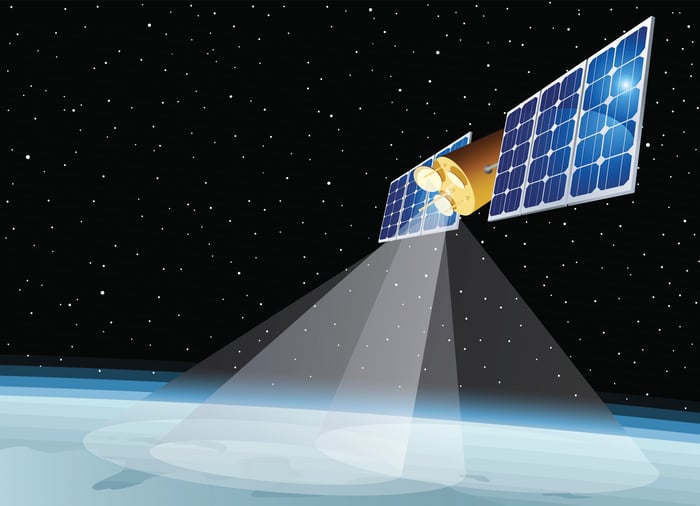
Image source: Getty Images.
Starlink evolves
Starlink is the SpaceX network of 4,800 internet satellites that sells broadband access around the globe for about $110 a month. Last month, SpaceX confirmed that Starlink had hit 2 million subscribers, a number that implies the service is already generating revenue on the order of $3 billion per year.
And now SpaceX will repurpose part of its civilian Starlink service for military use, thereby monetizing the experience it has developed from operating Starlink in Ukraine. The new service, called Starshield, first registered on the public’s radar in December 2022 when a new tab appeared on the main SpaceX web page, one of eight at the top of the page describing the company’s services.
These include Starlink itself, the Falcon 9 and Falcon Heavy rocket programs, a Starship spaceship still in development, Dragon spaceships for carrying cargo to orbit, a spaceflight program for transporting astronauts to the International Space Station and the moon, and a ride-share program placing small satellites alongside primary payloads on Starlink launches.
Clicking on the Starshield tab, space fans will discover what SpaceX has in mind for this newest service. To wit, building on the company’s experience operating Starlink throughout the war in Ukraine, fending off cyberattacks, and keeping Starlink operational despite Russian jamming attempts. SpaceX has developed proficiency in maintaining and operating a communications network in the middle of a shooting war — a proficiency that, it reasoned, the U.S. military might find helpful.
The future of Starshield
SpaceX was right about that — as much as $70 million right. And this could be just the beginning for SpaceX’s Starshield project. The company advertises the project’s secure communications, but Starshield also aims to offer the military earth observation and hosted payload services.
SpaceX is already building a limited number of earth observation satellites (specifically for missile tracking) for the U.S. Space Development Agency, an arm of the Space Force. Technically, this isn’t part of the Starshield project yet.
But as the military begins operating these tracking satellites, and starts allocating further dollars to Starshield for communications services, it’s logical to assume that SpaceX’s earth observation activities will eventually be folded into the Starshield project.
It’s also logical to assume, if all goes well with both these preliminary exercises, that the military will begin ordering additional earth observation satellites from SpaceX, and perhaps some of these hosted payload services as well.
What it means for investors
There are two primary conclusions for investors from all of the above. First and foremost: SpaceX is getting bigger, evolving and branching out into new areas of space work. This poses a challenge to incumbents that are already doing this kind of work — Maxar and Planet Labs in the field of earth observation, for example.
But it also means that SpaceX is developing new revenue streams for itself through Starshield and Starlink.
This is important to investors, even though SpaceX is still a private company, because for the last couple of years, Elon Musk has repeatedly stated his intention to offer an initial public offering (IPO) for Starlink once its revenue is growing predictably enough to attract investors. With $3 billion in civilian revenue annually already, and now tens of millions of dollars beginning to pour in from the military (and more on the way), it appears that Starlink is approaching that point. Thanks to Starshield, Starlink now looks like a bona fide IPO prospect.
Investing in initial public offerings (IPOs) might seem like an exciting opportunity as you will be one of the first people to own a stock when it hits the capital markets. But like other types of investments, IPO stocks can carry significant risk. For example, some companies that were unicorns during their days of being private may be hyped up before their IPO. Subsequently, when the stock goes public, investors buy the hype story and pour into the stock, propelling it upward.
But momentum traders eventually exit their positions and book a quick profit. As the stock begins to crater, those who bought into the story, and not the business, are left holding the bag.
Over the last couple of weeks two big-name tech companies hit the public exchanges: semiconductor company Arm Holdings (ARM -1.69%) and grocery delivery platform Instacart (CART -1.65%). Although both of these companies present interesting investment opportunities, there is a lot each needs to prove in order to earn a spot in your portfolio. Let’s dig into why.
1. Arm Holdings
If Arm Holdings sounds familiar, it’s likely because the company was nearly acquired by its semiconductor counterpart Nvidia a couple of years ago. However, the acquisition deal eventually fell apart due to antitrust concerns.
Before going public, Arm was primarily owned by Japanese investment firm SoftBank Group. At first glance, Arm might look really appealing. After all, it garnered the attention of Nvidia, which is dominating the intersection of artificial intelligence (AI) and semiconductors. Moreover, the company’s position in SoftBank’s legendary portfolio may seem like the ultimate stamp of approval.
But Arm is having some noticeable struggles growing its top and bottom lines. Revenue is shrinking while expenses are getting bloated. This is a classic recipe for cash-flow and profit constraints. Given the lack of growth, it raises the question why Arm would go public right now at all.
Despite its long track record of success, SoftBank has unfortunately had a number of busts in recent history — including WeWork. Given some of these sour investments, it could be the case that SoftBank needs to raise some cash. And what better way to do that than cashing in on AI mania with its own semiconductor company? As I recently argued, my suspicion is that SoftBank is looking to take advantage of the current tailwinds in the tech sector driven by AI. But keen investors should be able to see through the mirage and shy away from Arm for now.

Image source: Getty Images.
2. Instacart
I view Instacart — whose formal business name is Maplebear — as a convenience option. In other words, having the ability to use an app to order groceries and have them delivered to your home is a nice luxury. But with that said, my fear is that some investors may fall for Instacart’s marketing and buzzwords, and view the operation as more than what it really is. The investment community saw this exact dynamic with Sweetgreen a couple of years ago. Sweetgreen makes delicious salads and I personally am a happy customer. However, the healthy food chain is not a technology company and should not be treated as such.
Tough Instacart operates around a sophisticated order management platform, the actual business consists of physically lugging goods from Point A to Point B. According to the company’s regulatory filings, Instacart generates revenue from transaction fees and advertising. The transaction revenue stems from fees paid by customers and retailers, while advertising hails from brand partners. Some of the biggest risks that I can think of facing a model like this revolves around the transaction fees.
For instance, grocery stores tend to operate on razor-thin margins as it is since some items need to be changed almost daily, which makes for a lot of wasted inventory. Given this dynamic, paying a fee to a service such as Instacart may not be sustainable in the long term for some grocery chains. On top of that, Instacart charges customers delivery and service fees, similar to when you order food through the platforms run by Uber Technologies or DoorDash. If you’re more of a power user, then paying for the company’s recurring subscription service, Instacart+, might be a more suitable economic choice. Nonetheless, as I mentioned above, Instacart’s service is a luxury of convenience. And during times of high inflation or rising borrowing costs, people will generally look for cost savings. In my opinion, services such as Instacart are some of the easiest to cut out in an effort to augment your monthly budget.
The table below reflects Instacart’s financial profile on a generally accepted accounting principles (GAAP) basis since year-end 2020:
| Line Item ($ in millions) | Year-End 2020 | Year-End 2021 | Year-End 2022 |
|---|---|---|---|
| Orders | 171.5 | 223.4 | 262.6 |
| Revenue | $1,477 | $1,834 | $2,551 |
| Gross profit | $879 | $1,226 | $1,831 |
| Gross margin | 60% | 67% | 72% |
| Diluted earnings per share | ($1.21) | ($1.12) | $0.96 |
Data source: company S-1 filing.
At first glance, this financial profile looks pretty incredible. The company grew revenue by 24% between 2020 and 2021, and an additional 39% in 2022. Moreover, Instacart’s gross margin has expanded at an impressive rate as the company posted a profit in 2022. However, Instacart’s profile through the first six months of 2023 may shed some light on the risk factors I laid out above.
Through June 30, Instacart has completed 133 million orders. Per its S-1 filing, this is virtually flat when compared to the first six months of 2022, and assumes only nominal growth above last year’s total order volume on an annualized basis. Furthermore, through June the company has generated about $1.5 billion in revenue. Assuming this run rate, Instacart is on pace for $3 billion in 2023 revenue, or roughly 16% revenue growth. What is going on?
I think it’s safe to say the company can attribute some of the pronounced growth in 2021 and 2022 to the COVID-19 pandemic. During the times of lockdowns and stay-at-home protocols, demand surged for online services. However, the dynamics have changed. The impact that inflation has on consumer discretionary products and services such as Instacart make it even more obvious that the business model is getting exposed. While the company offers a convenient service, I question if it’s entirely investable. I suggest looking elsewhere and passing on the digital transformation of grocery delivery.
Instacart stock opens with a bang, in another sign of life for cautious IPO market
The grocery-delivery app Instacart, known officially as Maplebear Inc., debuted on Wall Street with a bang Tuesday, opening 40% above where its initial public offering priced before easing later on — potentially paving the way for more IPOs after a two-year dry spell.
Shares finished the day up 12% from its $30 IPO price, at $33.70. They were down 1.5% after hours.
The debut for Instacart
CART,
follows the successful IPO of chip designer Arm Holdings
ARM,
and comes ahead of an expected debut from digital-marketing platform Klaviyo Inc. this week. And it comes after the IPO market stalled last year, following concerns about inflation, a wobbly economy and a middling performance from companies that went public in 2021.
“We’re coming out of the tech IPO desert,” said Alex Wellins, co-founder of the Blueshirt Group, an IPO advisory and investor relations firm. “We’re coming out of the longest drought period for technology IPOs in modern history.”
Still, he said that private companies are likely to approach markets with caution through this year, as they wait for the economy to find its footing. More of those companies, he said, are likely preparing to give themselves the option for a 2024 debut.
Interest in IPOs has eased relative to interest in the broader stock market. The Renaissance IPO ETF
IPO
has lost 0.8% over the past three months. Meanwhile, the the S&P 500
SPX
has gained 0.5%.
Instacart’s debut also marked the exit of co-founder Apoorva Mehta, who the company has said would depart as chairman as in connection with the offering. Mehta, in an interview with Barron’s on Tuesday, said he planned to step back from Instacart to focus on ambitions in the healthcare industry.
Late Monday, Instacart priced its 22 million shares at $30 apiece, which was at the top of the expected range, giving the company a fully-diluted valuation of roughly $10 billion.
The stock’s first trade on the Nasdaq was at $42.00 at 12:49 p.m. Eastern for 2.59 million shares. At that price, the company would be valued at $14.2 billion, based on 338.8 million as-converted, fully diluted shares outstanding after the IPO.
Read: Instacart IPO: 5 things to know about the app that’s looking to ride a ‘massive digital transformation’ in grocery shopping.
Instacart is hoping to take advantage of a grocery-shopping experience that it says has yet to be fully digitized. But it faces large rivals like Walmart Inc.
WMT,
and Amazon.com Inc.
AMZN,
and slower growth, as grocery shoppers feel the pinch from higher prices. Instacart’s top 3 customers account for big chunk of shopper demand.
Instacart’s IPO, will also give investors a deeper look at demand for a newer line of business for physical and online retailers: advertising. The company, like Amazon and Walmart, is trying to make more money off of digital ads that appear on its app and website. Sales have grown in that segment. But Instacart, in its IPO filing, said some of the businesses paying for those ads were still skittish on the economy.
But as more shopping happens online and privacy concerns grow, the battle for consumer data — and platforms that can harness it into more effective ads — has grown more intense.
“As Apple and Google make changes to their data privacy policies, first-party data is becoming increasingly valuable for data collaboration between retailers and brands,” said Kevin Dunn, vice president of industry sales, retail and CPG at LiveRamp, a data collaboration platform.

